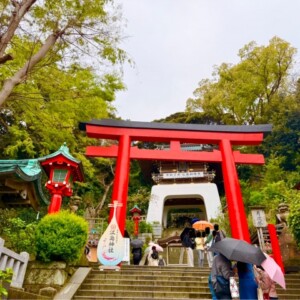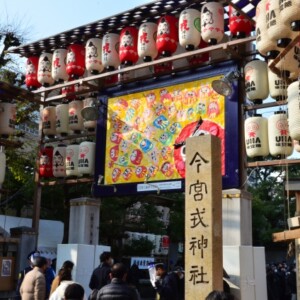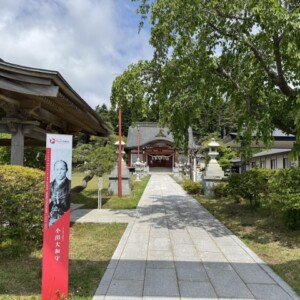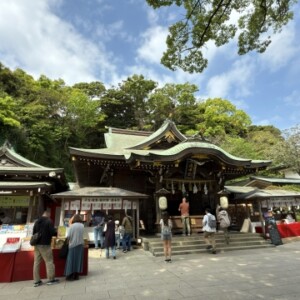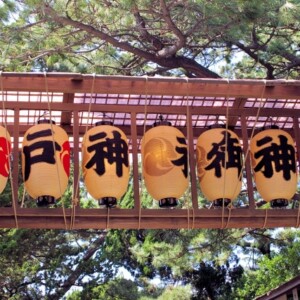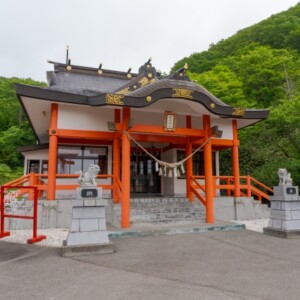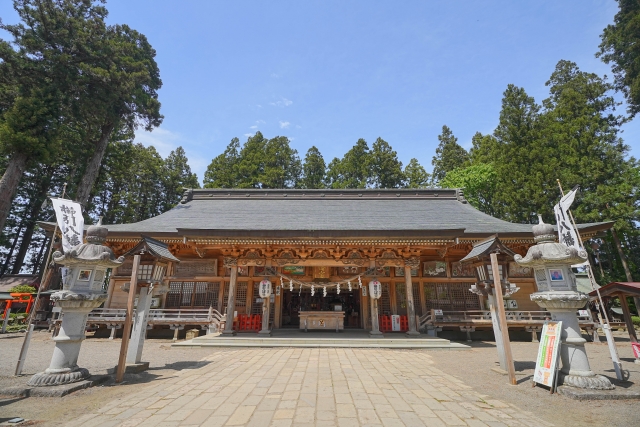
Kushibiki Hachimangu Shrine|Complete guide to the charms and visitation guide of this historic shrine with a long history as the chief guardian of the Nanbu domain
Kushibiki Hachimangu Shrine, located in Hachinohe City, Aomori Prefecture, is a historic shrine that has been worshipped by the people as the chief guardian of the Nanbu domain for over 800 years since the Kamakura period. Visitors are deeply moved by the shrine’s valuable cultural assets, including the red-threaded armor designated as a national treasure, and the solemn grounds surrounded by a grove of cedar trees several hundred years old.
Outline and Basic Information of Kushibiki Hachimangu Shrine
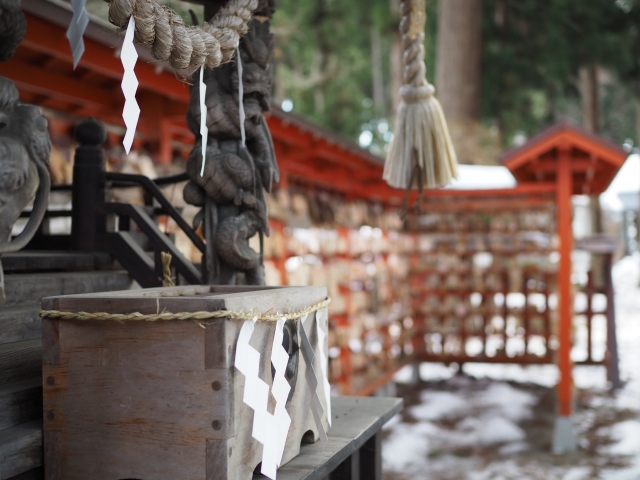
Kushibiki Hachiman-gu Shrine is located in Hachiman-aza Hachiman-cho, Hachinohe City, Aomori Prefecture, and boasts a long history as the chief Shinto shrine of the Nanbu domain. The shrine grounds cover a vast area of 53,000 square meters, and the sacred area, lined with centuries-old cedars, is nicknamed “Hachiman-yama (Mt. Hachiman). The entire shrine is protected as a valuable cultural asset, with the main shrine and five other buildings designated as national important cultural properties.
History and Origin
The founding of Kushibiki Hachimangu Shrine dates back to the 2nd year of Kenkyu (1191). It dates back to 1191, when Mitsuyuki Nanbu, the first generation of the Nanbu family, received Nukabe-gun from Minamoto no Yoritomo for his distinguished service in the Battle of Hiraizumi in 1189. Mitsuyuki sent his vassal, Heijiro Tsushima, to Kainanbu Township to dedicate the Hachiman Shrine and built a temporary shrine in Takinosawa Village in Rokunohe.
Later, in the first year of Jouou (122), the shrine was relocated to its present location in Kushibiki Village. It is said that there was a small Hachimangu shrine here that was founded by Sakagami Tamuramaro during the Daido period (806-810), and the present Kushibiki Hachimangu was established by enshrining it together with this shrine. Since then, the shrine has been called “Nanbu Ichinomiya” as the general guardian of Nanbu, and has been revered by successive lords of the Nanbu domain.
It is also notable that an organized management system was in place from the time of its founding, with Fumonin founded by Yuhaku, a Buddhist priest who served as an attendant from Kai, and the Takizawa family, descendants of Heijiro Tsushima, in charge of rituals as “key guardians.
Gods of worship and benefits
The main deity of Kushibiki Hachiman-gu Shrine is Hachiman-O-no-Mikoto (Honorific Goddess), who is believed to be the divine spirit of Emperor Ojin. Amaterasu and Amatsuko-no-Kojin are enshrined in the two other halls, and they are revered as the three Hachiman deities.
Hachiman is known as the god of military fortune, and is believed to be effective in all fields of industry and commerce, including cultural prosperity, commerce, industry, agriculture, fishing and hunting, transportation, and civil engineering. He is also believed to bring prosperity to the family, success in life, and traffic safety.
Other shrines on the grounds of the shrine include Shinmei-gu Shrine (Amaterasu no Mikoto), Kasuga Shrine (Amatsu no Kogei), and Motofuwa Inari Shrine (Kurainari), each of which attracts visitors seeking different benefits.
Highlights and Features of Kushibiki Hachimangu Shrine
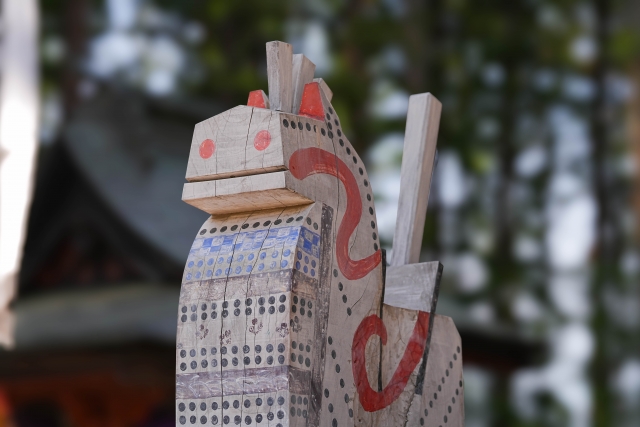
Kushibiki Hachimangu Shrine is a shrine with a wealth of architectural, cultural, and natural attractions. The shrine pavilions, which still preserve the architectural style of the early Edo period, the cultural assets that are national treasures, and the majestic nature that surrounds the Shinto sanctuary combine to create a special space that cannot be experienced anywhere else.
Architectural and Structural Attractions
The buildings of Kushibiki Hachimangu Shrine are masterpieces of shrine architecture from the early Edo period. The present main shrine, built in 1648 by Shigenao Nambu, is a sangensha nagare-zukuri structure with a copper shingle roof, and is designated as a National Important Cultural Property. The grand and graceful structure, which evokes the style of the Momoyama period, is particularly impressive for the beautiful curves of the flowing roof.
The worship hall is a relatively new building completed in 1984, but it has inherited the traditional style with its imposing structure of 15 ken (the length of a girder) and 3 ken (the length of a pent roof) with a copper shingle roof. The elaborate carvings on the main hall attest to the high level of craftsmanship of the early Edo period.
Shinmei-gu Shrine and Kasuga-gu Shrine, also within the precincts of the shrine, were built in 1739 and are both designated as National Important Cultural Properties of Japan. Shinmei-gu Shrine and Kasuga Shrine are built in two different architectural styles, the Ikkensha Nagare-zukuri style and the Ikkensha Kasuga-zukuri style, respectively, and although small in scale, they are beautiful shrine pavilions with a formal appearance.
A Western-style building called Meiji Kinenkan (Meiji Memorial Hall) has also been preserved within the shrine precincts. This is the oldest Western-style building in the prefecture, built in 1879 as an auditorium for Hachinohe Elementary School, and was used as a post office during the Emperor Meiji’s tour of the Tohoku region.
Valuable Cultural Assets in the National Treasure Museum
One of the main attractions of Kushibiki Hachimangu Shrine is the National Treasure House located within the shrine grounds. The National Treasure Hall houses and exhibits valuable cultural assets since the Middle Ages, including the famous “Kiku Ichimonji Armor and Helmet” (National Treasure, red thread armor and white thread armor), three pieces of armor designated as National Important Cultural Properties, nine bugaku masks, a sword, two crooked mouths, etc. The National Treasure Hall is also home to the “Kushibiki Hachiman-gu Shrine”, which is a national treasure.
The National Treasure, Akashito Wei Armor, is associated with Lord Shinra Saburo Yoshimitsu (Minamoto no Yoshimitsu) and is regarded as the pinnacle of armor craftsmanship in the late Heian period. The beautiful armor is decorated with gilt bronze and boasts a majestic appearance that is described in an ancient document as “just shining.
The National Treasure, “White Thread Vigor” armor, also from the late Heian period, is characterized by its elegant design of white threads. These pieces of armor are highly regarded by researchers and lovers of cultural assets as representative of Japanese armor craftsmanship.
The Bugaku masks are designated as important cultural properties of the prefecture, and the Ryouou masks are especially elegant. The Crooked Mouth, produced in 1405, bears the dedication inscription of Nanbu Moriyuki, the founder of the Nanbu clan, and is a valuable historical document that tells of the deep relationship between the Nanbu family and Kushibiki Hachiman Shrine.
Nature and Scenic Beauty
The grounds of Kushibiki Hachimangu Shrine are surrounded by old cedar trees several hundred years old, creating a quiet and solemn atmosphere. These cedar groves are symbolic of the sacred area called “Hachiman-yama,” and their pavilions and the way they point to the sky leave a deep impression on many visitors.
The natural environment of the temple grounds shows its beauty throughout the four seasons. In spring, fresh greenery colors the grounds, and in summer, deep green shade provides coolness. In autumn, autumn leaves adorn the cedar grove, and in winter, the precincts are covered with snow, creating an illusion of beauty.
The serenity of the shrine grounds is a special experience that cannot be found in urban areas, allowing visitors to forget the hustle and bustle of daily life and purify their minds. Especially in the early morning and at dusk, the precincts of the temple are filled with a mysterious atmosphere, and many people have felt the presence of the sacred since ancient times.
Guide to Worship and Visiting the Shrine
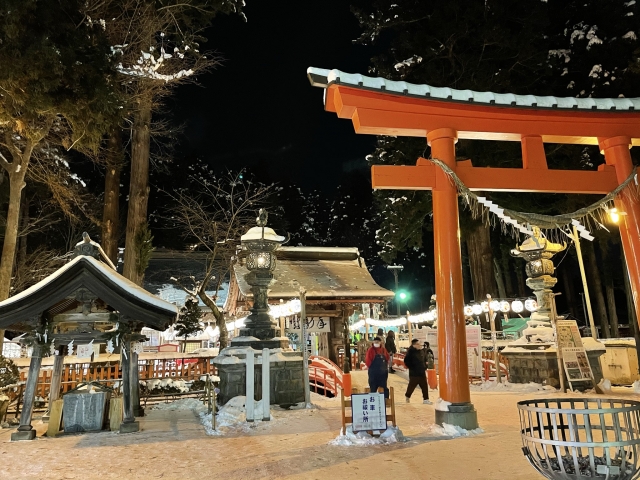
Visiting Kushibiki Hachimangu Shrine can be a more profound experience if you follow the etiquette that has been handed down since ancient times. Visitors are recommended to visit the shrine in a clockwise direction, entering through the main gate and following the route to the various shrines. Various festivals are held throughout the year, each with its own unique traditions.
Worship Etiquette and Manners
At Kushibiki Hachiman-gu Shrine, visitors follow the basic rules of shrine etiquette. First, purify yourself at the water fountain, and then worship in front of the main shrine with the two-beat-and-one-worship manner. It is important to keep in mind that the shrine grounds are a sacred place, and to act quietly and respectfully.
It is recommended to visit the temple grounds from the main gate in a clockwise direction. The main shrine, Shinmei-gu Shrine, Kasuga Shrine, and Agonwari Inari Shrine should be visited in that order, paying respect to each of the deities. Photography is allowed, but please note that photography is prohibited inside the main shrine and the National Treasure Museum.
If you wish to pray, reservations are not required except for weddings and group prayers, which are conducted sequentially after reception at the shrine office. However, there are times when prayers are not available, so it is recommended to check the schedule on the official website or contact the shrine office in advance.
Annual and Seasonal Events
Various festivals are held throughout the year at Kushibiki Hachimangu Shrine. On the third day of the New Year, many first-time visitors come to the shrine to pray for a happy new year with the sound of a big drum that heralds the new year.
The main annual events are the New Year’s Day Festival on January 1, the Setsubun Festival in February, and the Spring Prayer Festival (April 15 on the lunar calendar and May 12 on the new calendar). The Prayer Festival is one of the most important festivals of the shrine, and is held together with the eve of the festival. The annual grand festival is also held at the shrine’s precincts, Agonbari Inari Shrine, to pray for a bountiful harvest and prosperous business.
A special “Yomatsuri” (night festival) is also held, which is considered one of the most unique rituals at the shrine. This is a rare opportunity for visitors to be allowed to worship in the main shrine, and is held from 8:00 p.m.
Prayers are offered at the shrine for various life rituals, such as safe delivery, first visit to the shrine, the Seven-Five-Three-Three Festival, and exorcism of bad luck. These prayers are performed in accordance with the traditions that have been cultivated over the long history of the shrine.
Red Seal and Good Luck Charm Information
Several types of red seals are available at Kushibiki Hachimangu Shrine. In addition to one type of regular red seal (800 yen), there are three types of colored red seals (1,000 yen), all of which are currently available on a book-entry basis. All seals are currently available for red seal stamps.
Two types of Goshuin books are also available, with the standard size available for a first fee of 1,500 yen. The original red seal book of Kushibiki Hachimangu Shrine features an elegant design befitting the prestige of the shrine.
As for amulets, various types are available for various benefits such as military fortune, safe delivery protection, traffic safety, academic achievement, and prosperous business. Amulets associated with the divine virtues of Hachiman-taijin are especially popular and sought after by many visitors. Please note that you must visit the shrine in person to purchase the gifts, and that they are not distributed online.
Access/Use Information
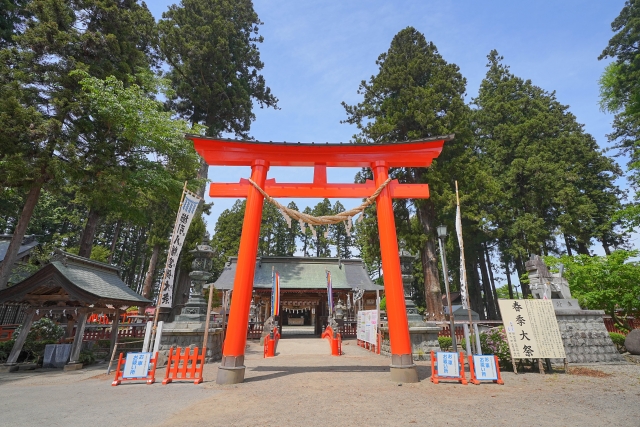
Kushibiki Hachimangu Shrine is located not far from the city center of Hachinohe, Aomori, and is most conveniently accessible by car. If using public transportation, access is possible by bus, but the number of buses is limited, so advance confirmation is required.
Transportation Access
Access by car is most convenient. It is approximately 10 minutes from JR Hachinohe Station, 10 minutes from the Hachinohe IC, and 20 minutes from downtown Hachinohe. The most common route is via National Route 45 after exiting the Hachinohe IC on the Tohoku Expressway.
When using public transportation, the nearest bus stop is “Kushibiki Hachimangu-mae” on the Nanbu Bus. From Hachinohe Station, take the bus via Judicial Center-mae or Hachiman and get off at Kushibiki Hachiman-gu Shrine-mae. However, it is recommended that you check the route map and timetable in advance, as buses may require connections.
If you take a cab from Hachinohe Station, it will take about 15 minutes. Cabs are always waiting in front of the station, and the fare is approximately 2,000 yen. Car sharing services are also available in the Hachinohe Station area, and an increasing number of visitors use rental cars or car sharing services.
<Address> 3 Hachiman-cho, Hachiman, Hachinohe City, Aomori Prefecture, 039-1105, Japan
Hours of Admission, Fees and Parking
Visiting Kushibiki Hachimangu Shrine is possible 24 hours a day, 7 days a week, all year round. The shrine is open 365 days a year, and early morning and evening visits are possible, but the shrine office and the National Treasure Museum have business hours.
The National Treasure Museum is open from 9:00 a.m. to 5:00 p.m., all year round. Admission is 400 yen for adults, 300 yen for junior and senior high school students, 200 yen for elementary school students, and free for infants. The National Treasure Museum offers a rare opportunity to see valuable cultural assets up close and experience the best of Japanese armor craftsmanship.
Prayers and the awarding office are open from 8:30 am to 5:30 pm. Prayers can be offered at any time, and no special reservations are necessary, but advance consultation is required for weddings and group prayers.
Parking is free in the large parking lot. Although crowding can be expected during busy periods such as the three days of the New Year, ample parking space is provided by taking advantage of the precincts’ spaciousness. The temple also accommodates group visits by large buses, and is often used by sightseeing bus tours.
Reference sites
Official website of Kushibiki Hachimangu Shrine: https://www.kushihikihachimangu.com/
Aomori Prefecture Tourism Information Site Amazing AOMORI: https://aomori-tourism.com/spot/detail_434.html
VISIT HACHINOHE: https://visithachinohe.com/spot/kushihiki-hachimangu/




